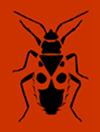成虫年龄和体型对微小型Gronotoma卵成熟的影响(膜翅目:Figitidae)
IF 1.2
3区 农林科学
Q2 Agricultural and Biological Sciences
引用次数: 1
摘要
食蟹蜂Gronotoma micromorpha(Perkins)(膜翅目:Figitidae)是潜叶蝇Liriomyza trifolii(Burgess)(Diptera:Agromyzidae)的一种寄生蜂。测定了成体年龄和体型对微形态G.卵成熟的影响。结果表明,在成虫羽化后的3或6天内,当提供蜂蜜、水而不是宿主时,其卵量(每只雌性成熟卵的数量)会增加。然而,3日龄和6日龄黄蜂的产卵量没有显著差异。这些发现和先前对其他食蟹寄生蜂的研究结果表明,当宿主不可用时,食蟹寄生蛛的雌性会通过利用幼虫期储存的碳水化合物和储备来提高其繁殖能力,以期未来宿主的可用性。此外,大型雌性黄蜂一生的产卵量都较高。考虑到温室中常见的三叶草种群密度的快速增加,未来需要对喂食蜂蜜的0天和3天大的微形态G.morpha雌性的人口统计数据进行比较。还应确定体型对G.微形态黄蜂繁殖力和寿命的影响。*通讯作者;电子邮件:y_abe@scs.kyushu-u.ac.jp引言已经对寄生蜂的卵成熟进行了广泛的研究,以阐明这些黄蜂的生活史和繁殖策略(例如,Rosenheim等人,2000;Jervis等人,20012008)。产卵指数是通过将羽化时成熟卵子的数量除以潜在的一生繁殖力来计算的,被广泛用于评估寄生蜂的各种繁殖特征(Jervis等人,20012008;Jervis和Ferns,2004年)。从繁殖的角度来看,寄生蜂可分为促产卵物种,其中大部分或全部潜在的终生卵补体在羽化时成熟,或滑膜物种,其中卵成熟在整个成年阶段持续(Flanders,1950)。然而,在寄生蜂中也发现了亲产卵和滑膜炎之间的连续性,并且严格的亲产卵(产卵指数=1)是罕见的(Jervis等人,2001;Ellers&Jervis,2004年)。出现大量成熟卵子的雌性,再加上雌性一生中额外卵子的成熟,被称为促雌寄生蜂(Quicke,1997)。宿主喂养和生产富含蛋黄的蛋在滑膜炎物种的雌性中很常见,这些物种通常是欧洲昆虫杂志。118:364-3672021 doi:10.144411/eje.2021.038本文章由计算机程序翻译,如有差异,请以英文原文为准。
Effects of adult age and body size on egg maturation in the parasitoid Gronotoma micromorpha (Hymenoptera: Figitidae)
The cynipoid wasp Gronotoma micromorpha (Perkins) (Hymenoptera: Figitidae) is a parasitoid of the leaf miner Liriomyza trifolii (Burgess) (Diptera: Agromyzidae). The effects of adult age and body size on egg maturation in G. micromorpha were determined. The results showed that its egg load (number of mature eggs per female) increased when offered honey, water, but not hosts for 3 or 6 days after adult emergence. However, there was no signifi cant difference in the egg loads of 3and 6-day-old wasps. These fi ndings and the results of previous studies on other cynipoid parasitoids suggest that when hosts are not available, females of parasitoid Cynipoidea enhance their reproductive capacity in anticipation of a future improvement in the availability of hosts by using carbohydrates and reserves stored during the larval stage. Moreover, large female wasps had higher egg loads throughout their lifetime. Given that rapid increases in the population density of L. trifolii are commonly reported in greenhouses, the demographic data of 0and 3-day-old G. micromorpha females fed honey, need to be compared in the future. The effects of body size on the fecundity and longevity of G. micromorpha wasps should also be determined. * Corresponding author; e-mail: y_abe@scs.kyushu-u.ac.jp INTRODUCTION Egg maturation in parasitoid wasps has been extensively investigated in order to clarify the life-history and reproductive strategies employed by these wasps (e.g., Rosenheim et al., 2000; Jervis et al., 2001, 2008). An ovigeny index, calculated by dividing the number of mature eggs upon emergence by potential lifetime fecundity, is widely used to assess a variety of reproductive traits of parasitoids (Jervis et al., 2001, 2008; Jervis & Ferns, 2004). From the viewpoint of reproduction, parasitoid wasps are classifi ed as pro-ovigenic species, in which most or all of the potential lifetime egg complement is mature upon emergence, or synovigenic species, in which egg maturation continues throughout the adult stage (Flanders, 1950). However, a continuum between pro-ovigenic and synovigenic has also been identifi ed in parasitoids, and strict pro-ovigeny (ovigeny index = 1) is rare (Jervis et al., 2001; Ellers & Jervis, 2004). Females emerging with a considerable number of mature eggs, combined with maturation of additional eggs throughout the lifetime of the female, are referred to as prosynovigenic parasitoids (Quicke, 1997). Host feeding and production of yolk-rich eggs are common in females of synovigenic species, which are typically Eur. J. Entomol. 118: 364–367, 2021 doi: 10.14411/eje.2021.038
求助全文
通过发布文献求助,成功后即可免费获取论文全文。
去求助
来源期刊
CiteScore
2.30
自引率
7.70%
发文量
43
审稿时长
6-12 weeks
期刊介绍:
EJE publishes original articles, reviews and points of view on all aspects of entomology. There are no restrictions on geographic region or taxon (Myriapoda, Chelicerata and terrestrial Crustacea included). Comprehensive studies and comparative/experimental approaches are preferred and the following types of manuscripts will usually be declined:
- Descriptive alpha-taxonomic studies unless the paper is markedly comprehensive/revisional taxonomically or regionally, and/or significantly improves our knowledge of comparative morphology, relationships or biogeography of the higher taxon concerned;
- Other purely or predominantly descriptive or enumerative papers [such as (ultra)structural and functional details, life tables, host records, distributional records and faunistic surveys, compiled checklists, etc.] unless they are exceptionally comprehensive or concern data or taxa of particular entomological (e.g., phylogenetic) interest;
- Papers evaluating the effect of chemicals (including pesticides, plant extracts, attractants or repellents, etc.), irradiation, pathogens, or dealing with other data of predominantly agro-economic impact without general entomological relevance.

 求助内容:
求助内容: 应助结果提醒方式:
应助结果提醒方式:


